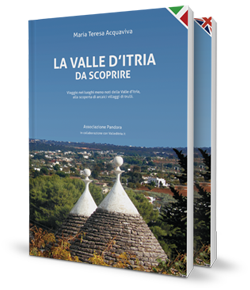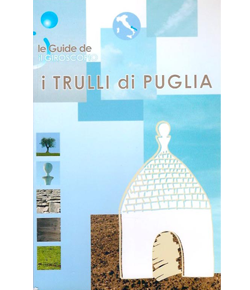Text translated by Emilio Acquaviva - Trainee
If you want sightsee the queens of Murge, the Masserie, you should get away from urban centers and walk the roads inside woods, arable lands and pastures.
If, walking along the rural roads of the Murgia dei Trulli, you move away from the urban centers, the landscape of the casedde and the vines, the almond trees, the figs and the vegetable gardens slowly gives way to large arable land and fodder with the woods in the background. For centuries farms have dominated this landscape, with their white architecture; there are thousands scattered throughout the Murgia, few still led by the massari, others who have become more technological farms; too many abandoned to a fate of decline and fortunately some renovated and transformed into accommodation facilities.
Masserie of Murgia dei Trulli are architectural emblem of local large estate history, that’s characterized, over centuries, by a gradual usurpation of state lands (at first used by community for agricultural pastoral purposes) handed down since 15th century by some pushing settlers that, over time, turned into land bourgeoisie. In 17th century the territory was governed by few families that also controlled the town administrations. Over history there haven’t been as big and wide large estates lands in Murgia dei Trulli as instead in others parts of the Puglia. The wides large estate (included arable lands, pastures and woods) was 500/600 hectare big. But, as in others areas of Puglia, Masserie was propelling centers of rural work and became architectural symbols of an agrarian class turned over time into local gentry.
The farms of the Masserie della Murgia dei Trulli consist of the houses of the wealthy owners and the part destined to work with many trulli. From the seventeenth century there was the social rise of the landowners and from that moment the farms became elegant country houses, with the owners' houses embellished with artistic decorations, therefore a status symbol for the owners. The presence of the church indicated the importance of the Masseria, in fact not everyone owned it. Initially the churches were in the part intended for services, from the 17th century they were built in important positions, in the 19th century someone even inside the manor house.
The service area of the farms included the stables for cattle, the haystack, the casolare (where the cheese was produced), the courtyards for the animals, the foggia (covered tank that collects the water for the field, for agricultural use ) the piscina (open tank for the collection of water), the courtyard, the iazzi (fences of goat far away and in a steep position on rocky bottoms), the millstones, the neviere (tanks used to conserve the snow that was then used in summer as ice) and the gardens with fruit trees.
It is not correct to describe the Masserie della Murgia dei Trulli with the adjective fortified because they do not have the architectural elements of the Masserie scattered on the Adriatic and Ionian coasts that were more exposed to raids by sea. The Murgia farms have few defensive elements, such as turrets, loopholes and the most defended have the courtyard with the surrounding wall. The most constant danger for the Murgia dei Trulli was the theft of cattle; however there were also assaults and someone was wrongly attributed to the brigands.
Currently active farms mainly cultivate fodder for cattle breeding. Thanks to the agricultural-pastoral activity and the tourist receptivity of the farms, the typical landscape of the Murgia is preserved, with large cultivated areas, pastures and a few hectares of woods. A heritage that would otherwise be invaded by building speculation widespread near urban centers.













